New Ajo Way Interchange
Tucson
BEST PROJECT
OWNER: Arizona Dept. of Transportation
LEAD DESIGN FIRM | CIVIL, STRUCTURAL, MEP ENGINEER: Stanley Consultants
GENERAL CONTRACTOR: Ames Construction Inc. (Phase 1), FNF Construction Inc. (Phase 2)
ENGINEERING: AZTEC Engineering Group Inc.
This project replaced a partial cloverleaf interchange originally built in 1965 that connects Interstate 19 and Ajo Way (State Route 86) in Tucson. In its place, the team built a safer, more efficient single-point urban interchange, only the third such highway configuration in the area.
Completed in August 2020, the project also included a wider bridge to replace the old four-lane bridge, a rerouted box culvert for the often-flooded wash below, an ADA-compliant pedestrian bridge, a detention basin for flood protection, sound walls and other “good-neighbor” enhancements.
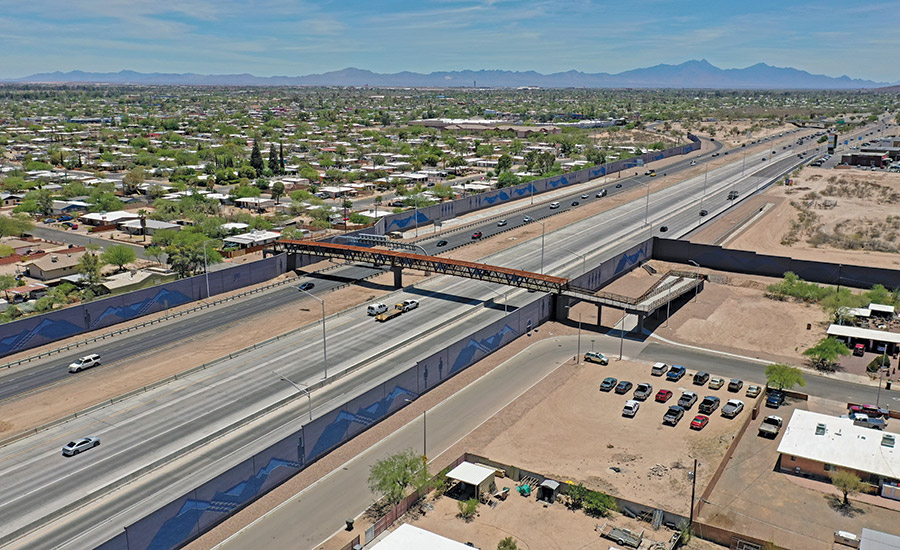
Photo courtesy of Stanley Consultants
To prevent vehicles from having to undergo weaves to enter or exit the freeway, the Ajo Way braided ramp elevates the southbound Ajo Way entrance ramp over the southbound I-19 traffic exiting onto Irvington Road. This configuration also eliminates the merging traffic weave along I-19 by ensuring that vehicles never cross paths, thus enhancing safety and traffic flow.
Major construction challenges included constructibility and traffic maintenance. During Phase 1, crews built approximately 70 ft of new bridge and bridge approaches. Nighttime closures of I-19 were required for girder installation and to place deck forms and concrete for the exterior parapet.
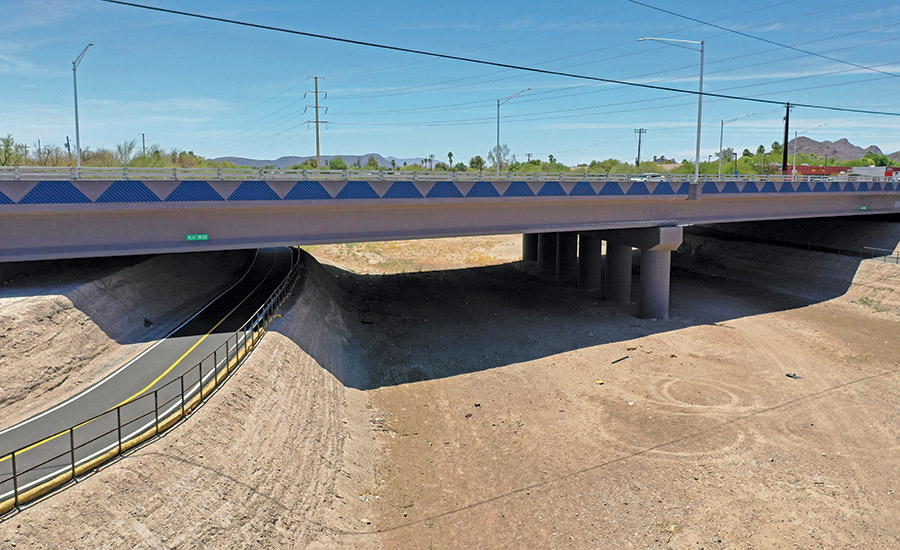
Photo courtesy of Stanley Consultants
Constructibility was enhanced by locating the new abutments within the end spans of the existing bridge to clear pier spread footings and abutment battered piles. During Phase 2, Ajo Way traffic was shifted to the new bridge and the existing bridge was demolished in a single weekend to minimize disruptions.
Crews had to contend with a 25-ft-deep layer of clay in order to prevent the settling of wall and bridge foundations. The bridge used drilled shafts up to 62 ft deep to avoid settling. Lightweight backfill was added at the retaining walls to limit settling as well.
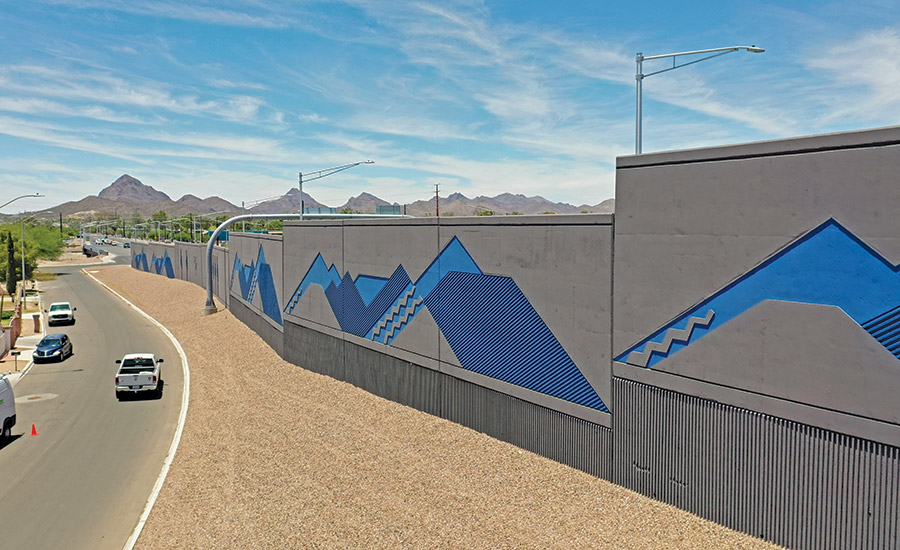
Photo courtesy of Stanley Consultants
The river area was a known prehistoric burial ground as well, presenting archaeological clearance and schedule issues.
Because the total project cost exceeded the available funding, the team scheduled two 18-month projects instead of a single two-year project, with two contractors participating, one in each phase.


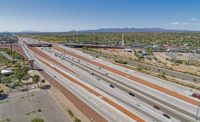
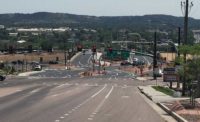

Post a comment to this article
Report Abusive Comment